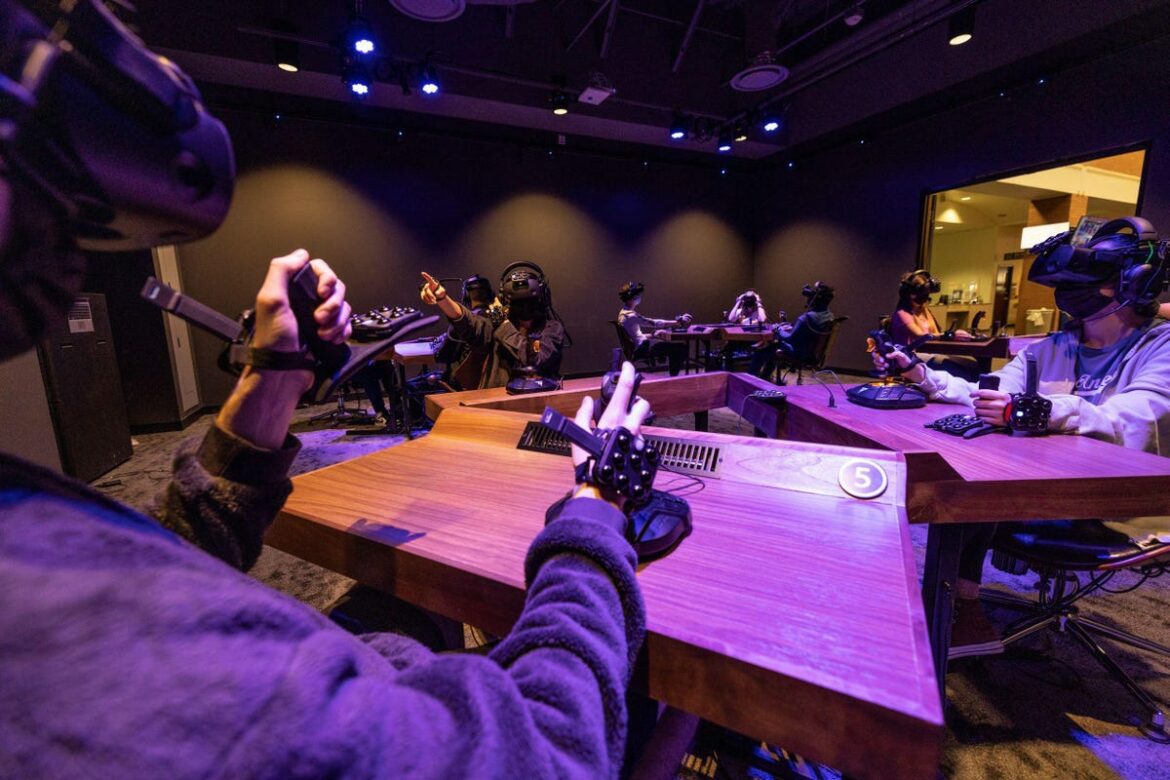At Arizona State University, learning merges pedagogy and narrative storytelling with fully … [+]
Today, millions more students have access to internet-enabled devices and broadband connections—at school and at home—than they did before the Covid-19 pandemic. The last two years have shown us the many ways that technology can support education and foster equity.
Yet some district leaders remain skeptical of the use of tech in K-12 education, believing that the return to in-person instruction gave them permission to return to the “tried-and-true” strategies for teaching and learning.
That’s unfortunate, since technology has the potential to radically alter how and where students learn. Concepts that sound like science fiction—think virtual reality, augmented reality and the metaverse—can make instruction more accessible, more equitable and more engaging, laying a foundation for a future of education that is both borderless (no longer tethered to the four walls of a school) and connected (linking real-world learning opportunities with students’ passions).
Take, for instance, the future of the internet—the decentralized, blockchain-powered version called “web 3.” This has the capacity to create “Ed3,” a radically new vision that puts students, wherever they are, at the center of learning. In this new era, students build their learner “wallets,” living, breathing digital pictures of their educational histories. In web 3, students—not institutions—own their own achievements and credits in this digital wallet. It captures who they are, how they learn best, what interests them and how their health and home lives impact learning. These digital wallets stick with them from kindergarten to high school graduation and beyond. And they leverage blockchain technology for education institutions and employers to recognize and catalog learning achievements, shifting the paradigm completely.
As noted entrepreneur and web 3/Ed3 expert Scott Meyer wrote, “Web 3 technology and ethos provide new possibilities for education to become more accessible, affordable and transparently accredited. Innovative education models are now being built that can provide inspiration and blueprints to truly embrace a shift to Ed3.”
Then there’s the promise of integrating emerging immersive technologies like AR and VR into the curriculum, which Arizona State University is piloting. Dreamscape Learn is a digital educational platform that merges pedagogy and narrative storytelling with fully immersive, avatar-driven virtual reality. ASU is using the technology from Dreamscape Learn for labs in two of its introductory biology classes. The platform gives students the chance to explore problems that reflect the courses’ key concepts—but in a way I could never have imagined.
Students at Arizona State University explore virtual wildlife sanctuaries within the “Alien Zoo” of … [+]
The lab I attended, “Alien Zoo,” simulated situations that scientists might encounter while working in a wildlife sanctuary, such as diagnosing infectious diseases or managing genetic diversity. I wasn’t holding a controller; my hands guided my journey—and I was transported to another place entirely. I was in the sanctuary, coming face to face with its animal inhabitants. It was a biology class, but I was interacting with the material in a deeper way than if I had been sitting in an auditorium listening to a lecture. I was beyond engaged.
“We’re trying to create an environment where each learner can have a unique learning experience emotionally triggered by particular individuality,” ASU President Michael Crow told me. “Right now, we’re trying to force fit everyone through ‘this is what you read and this is when you read it, and this is a lab and this is when you do it.’ It doesn’t mean that all that goes away. Far from it. This becomes a learning enhancement tool, a learning projection capability.”
Crow has a theory about how technology is shaping the way we teach and learn, something he calls the Five Realms of Learning. Realms 1 through 3 follow the path we’re all quite familiar with—moving from technology-enhanced instruction (computers) to digital immersion (internet-powered learning) to the era of Massive Open Online Courses.
He argues that we’re currently experiencing Realm 4, where strategies like AR, intelligent tutoring and game-based learning can unlock students from their geographic locations. In Realm 4, students always have access to world-class museums, since technologies like Dreamscape Learn can place them in a physicalized three-dimensional world. In Realm 4, they can always connect with off-campus mentors, coaches and experts who can layer their knowledge and skills with social connections and career advice—because those collaborative experiences happen virtually.
This type of thinking has profound implications for the future of K-12 instruction, particularly once we get to Crow’s Realm 5: infinitely scalable learning.
Web3/Ed3 and immersive technologies have the power to unlock students from time- and place-based learning, which is really the radical change our K-12 system needs. They can make learning borderless and connected, giving students the power to learn anytime, anywhere. They also have the potential to create greater access and opportunities for high-needs students, who often fail to receive such opportunities for no other reasons than their geographic location and social-economic status.
It will give kids an educational experience that’s as engaging and transformative as the technology itself.

